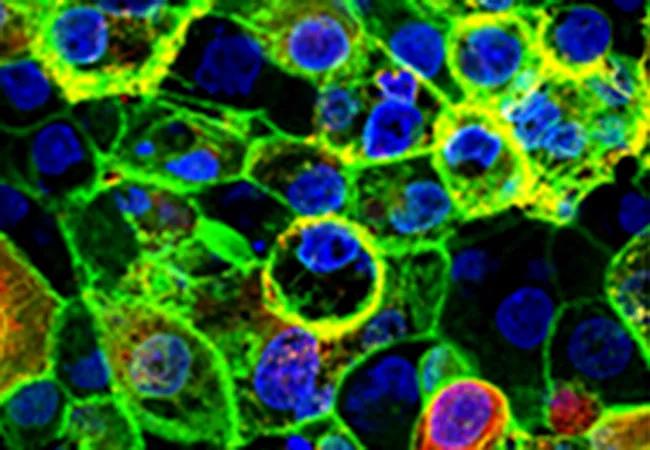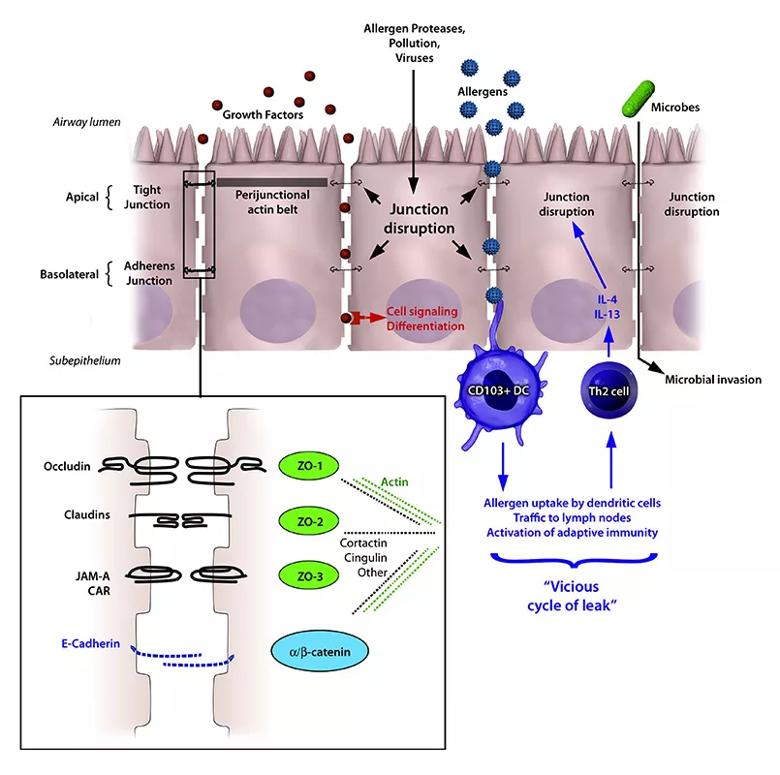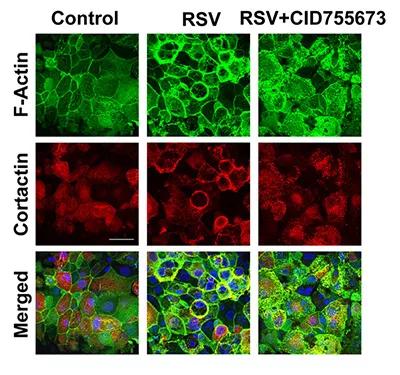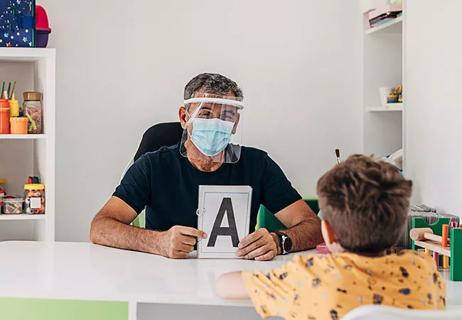Readying the research for animal model replication

Cleveland Clinic is a non-profit academic medical center. Advertising on our site helps support our mission. We do not endorse non-Cleveland Clinic products or services. Policy
Respiratory syncytial virus (RSV) is the most important virus causing acute lower respiratory infection in young children. RSV infects airway epithelial cells and is thought to cause tissue pathology by inducing expression of proinflammatory mediators, but the effect of RSV infection on airway epithelial barrier structure and function has not been well understood.
I have been part of a research team focused for a number of years on basic aspects of viral pathogenesis, airway epithelial biology and epithelial barrier immunology, with a particular interest in RSV. We are deeply interested in exploring mechanisms that regulate the structure and function of airway epithelial apical junctions, and a focus of our work has been establishing comprehensive in vitro and in vivo models to identify the signaling pathways that change the integrity of apical junctional complexes (AJCs) following RSV infection.
With my recent arrival at Cleveland Clinic Children’s, I am pleased to be continuing this research here, with the long-term goal of better understanding how to modify the involved mechanisms to restore barrier integrity and dampen inflammatory responses. This article reviews a few of my group’s findings in this area to date and some of our leading research priorities moving forward.
The airway epithelium forms a barrier to the outside world and is made up of the surface mucous layer as well as AJCs that regulate paracellular permeability. Our group has revealed that infection with RSV leads to airway epithelial barrier dysfunction in the absence of cell death. A defect of epithelial barrier allows greater luminal influx of environmental allergens, toxicants and microbes into the subepithelial space, where they may encounter dendritic cells and other immune sentinels.
Early studies in our lab showed that administration of polyinosinic:polycytidylic acid, a mimic of viral double-stranded RNA, induces barrier dysfunction, AJC disassembly and remodeling of the apical actin cytoskeleton.1 This involved a cell-intrinsic signaling mechanism dependent in part on toll-like receptor 3. We subsequently showed that RSV infection of airway epithelial cells also results in sustained decreases in airway resistance and increased paracellular permeability. The barrier-disruptive effects of RSV were not associated with cell cytotoxicity.

Figure 1. Illustration of airway epithelial cells indicating junctional structures, including tight junctions (black) and adherens junctions (blue), which are intimately linked with perijunctional actin filaments. The inset shows an enlarged schematic of protein-protein interactions in tight (black text) and adherens (blue text) junctions, including the ability of zonula occludens (ZO) proteins to interact with intracytoplasmic domains. Inhaled allergens, air pollutants and respiratory tract viruses can cause dysfunction of the epithelial junction, resulting in greater outside-in permeability. Barrier dysfunction will also allow greater sampling of luminal allergens (blue stars) by intraepithelial dendritic cells. Allergen-induced Th2 responses can induce a vicious cycle of leak because Th2 cytokines perpetuate junctional dysfunction. Another consequence of leaky epithelial barriers is increased microbial invasion, which might predispose susceptible patients to exacerbations or lung infections. Reprinted from reference 2, ©2014, with permission from American Academy of Allergy, Asthma and Immunology.
Most asthma exacerbations in children are caused predominantly by respiratory infections. Virus-induced epithelial permeability may facilitate the translocation of inhaled aeroallergens and may help explain the association between respiratory viral infection and allergen sensitization in asthma. A colleague and I recently summarized various barrier-disrupting agents in a review article.2 We elucidated how disruption of barrier integrity enhances outside-in translocation of inhaled particles into the subepithelial space, where these particles encounter innate immune cells and lead to airway inflammation and immune responses (Figure 1).
Our group has also found that RSV-induced disassembly of AJCs occurs in a protein kinase D (PKD)-dependent manner.3 Originally known as PKCμ, this molecule was renamed because its structure and substrate specificity differ from those of other PKC family members. PKD regulates cell shape and motility in part by controlling actin dynamics, and in support of a role for cytoskeletal remodeling, we found that RSV infection induces phosphorylation of the actin binding protein cortactin (Figure 2). Taken together, these studies suggest that PKD could be more broadly involved in barrier dysfunction caused by respiratory viruses, which will be an interesting area for future studies.

Figure 2. Confocal images showing marked redistribution of cortical actin fibers into intracellular vesicles and recruitment of cortactin to perijunctional actin filaments in RSV-treated epithelial cells, which was also inhibited by a pharmacological inhibitor of PKD (CID755673). Bottom row (yellow staining) shows increased co-localization of actin and cortactin in response to RSV infection. Reprinted from reference 3, ©2013, American Society for Microbiology.
The next step in our research will be to see if these observations can be replicated in an animal model. We currently have a limited understanding of how AJCs function in vivo in the normal lung. The RSV murine model offers advantages for studying the immunopathogenesis of RSV-induced long-term airway disease. Eventually, our research will focus on human studies to investigate the effect of viral infection on the airway barrier of patients suffering from asthma relative to nonasthmatic subjects.
Our findings collectively provide new insights into the regulation of the epithelial barrier by a clinically significant virus with a poorly understood pathogenesis. Improved understanding of the mechanisms involved will not only enhance our knowledge of basic biology but also aid in the design of agents that could specifically target virus-mediated pathology. Such agents would have positive impacts on the well-being and quality of life of both children and adults suffering from respiratory illness.
Dr. Rezaee is a pediatric pulmonologist in the Center for Pediatric Pulmonary Medicine and a member of the Department of Pathobiology in Cleveland Clinic’s Lerner Research Institute.

Cleveland Clinic physicians offer their insights

Increasing support for breastfeeding patients

Program has facilitated nearly 300 consults across 25 departments in less than a year

Though completely preventable, lead poisoning remains a public health threat

Differences in infection rates, management, outcomes and transmission

Helps patients visualize proper tongue placement

On the need for coordinated care